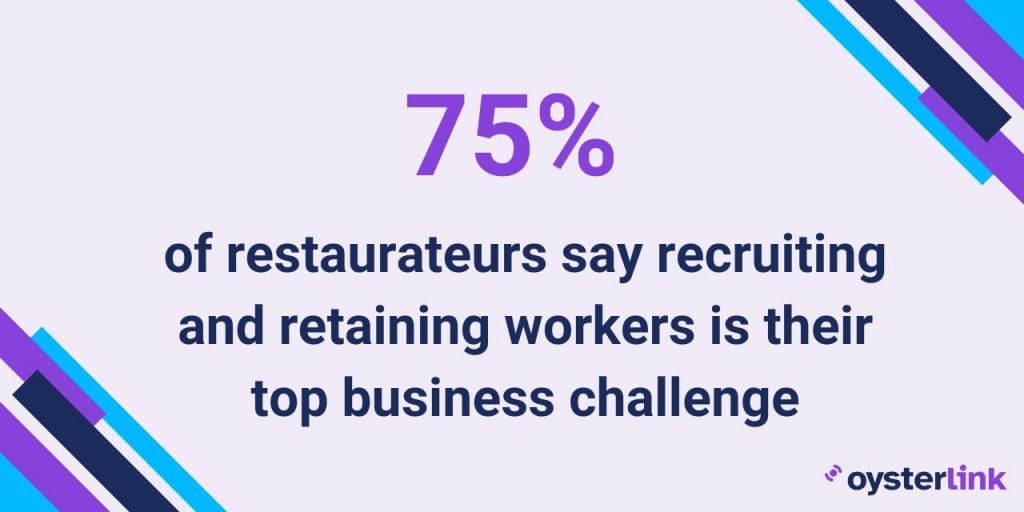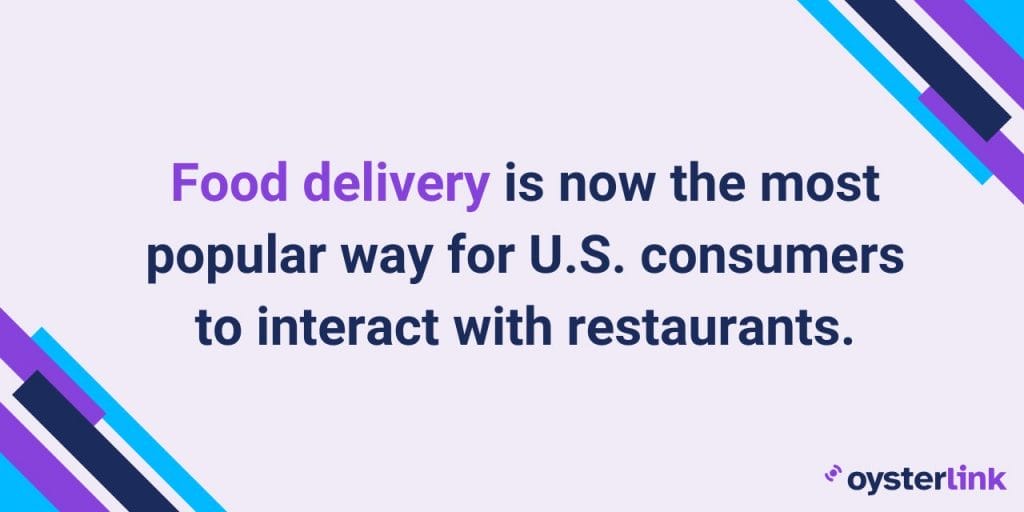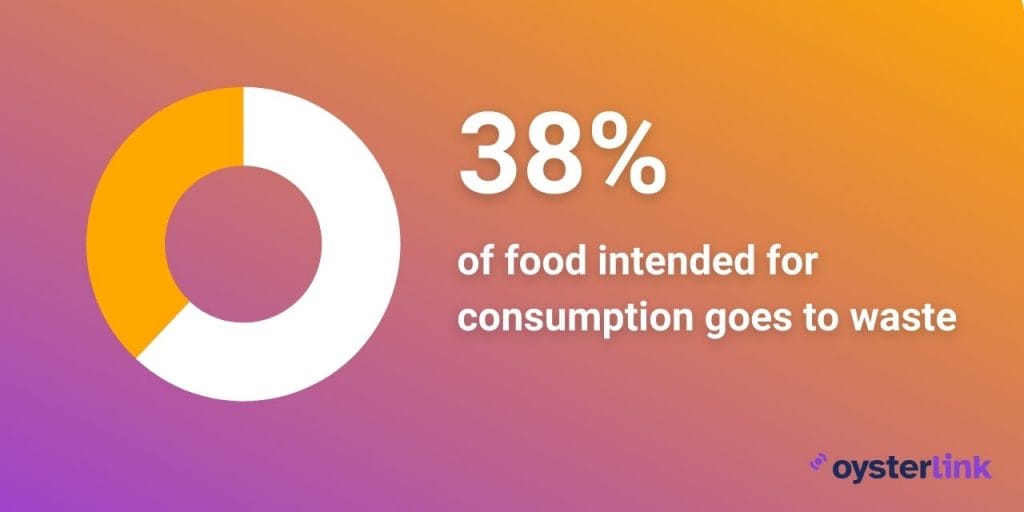The restaurant industry continues to evolve, shaped by high demand, intense competition and shifting consumer habits. As we begin 2025, owners and operators face a new set of restaurant challenges that demand not only adaptability but also innovative solutions.
From rising costs to staffing shortages, these obstacles can deeply affect operations, profitability and long-term sustainability. However, with the right strategies, restaurant operators can turn these challenges into opportunities for growth.
In this guide, we’ll explore the most pressing restaurant challenges owners are confronting and provide actionable insights to help navigate these hurdles.
1. Financial Pressures and Profitability Concerns

The restaurant industry has long been known for its slim profit margins, and with rising operational costs in the last few years, profitability has become an even greater challenge.
The financial climate poses challenges that can seriously affect a restaurant’s bottom line, from unpredictable ingredient costs to rising labor and energy expenses.
Rising food costs and supply chain disruptions
One of the primary concerns for restaurant operators in 2025 is the continuous rise in food costs, which have been exacerbated by ongoing supply chain disruptions.
Global events — such as pandemics, political instability and natural disasters — have put a strain on supply chains, resulting in unpredictable availability and fluctuating prices for essential ingredients. These price swings often force restaurants to raise their menu prices, which can turn away customers or affect overall sales.
Fortunately, the U.S. Department of Agriculture predicts that food prices will rise more slowly in 2025 compared to the historical average, offering a bit of relief. Below is a graph illustrating the expected increase in food prices for that year.
As shown, overall food prices are expected to increase by 1.9%, with food-at-home prices rising by 0.8% and food-away-from-home prices anticipated to increase by 3.5%.
To address these challenges, restaurants can implement several strategies to stay resilient in the face of rising food costs and supply chain disruptions:
- Adopt a dynamic pricing strategy that adjusts menu prices based on market conditions to maintain profitability and stay competitive.
- Build relationships with multiple suppliers to reduce risks from supply shortages and ensure a consistent supply of essential ingredients.
- Explore local sourcing opportunities to lower transportation costs, support community businesses and minimize environmental impact.
Labor expenses and wage pressures
Labor costs have consistently been a significant expense for restaurants, and in 2025, with minimum wage increases and a shortage of skilled workers, these costs are more pressing than ever.
It’s essential for operators to balance the need for fair wages with the overall financial health of the business. Failure to do so can lead to burnout, high turnover and a decrease in customer satisfaction due to staff shortages.
One effective strategy to address labor costs is to invest in cross-training programs. By training employees to take on multiple roles, restaurants can create a more flexible workforce. This reduces the need to hire additional staff during busy hours and allows for more efficient scheduling.
Furthermore, adopting technology solutions like automated order-taking systems, self-service kiosks or even robotic kitchen assistants can help streamline operations, reduce labor costs and improve service efficiency without compromising quality.
Operational efficiency and cost control
To maintain profitability in a high-cost environment, restaurants must focus on operational efficiency. Every aspect of the business should be examined to identify areas where costs can be reduced without sacrificing service or quality. This includes everything from inventory management to energy usage.
By implementing advanced inventory management systems, restaurants can reduce waste, avoid over-ordering and keep their kitchens running efficiently. Regular audits of energy consumption can also lead to significant savings.
Small investments in energy-efficient equipment, such as LED lighting and energy-saving ovens, can reduce utility costs over time.
2. Staffing and Workforce Management

As the industry continues to face challenges in staffing, restaurants are grappling with both recruitment and retention. With high turnover rates and competition for skilled workers, ensuring the right team is in place is currently one of the most pressing concerns for restaurateurs.
Attracting and retaining talent
Attracting talent to the restaurant industry is increasingly difficult, particularly in a competitive job market. In fact, 75% of restaurateurs say recruiting and retaining workers is their top business challenge.

High turnover rates are often driven by low wages, long hours and a lack of career development opportunities. To tackle this, restaurants should focus on creating a positive and supportive work environment that encourages long-term employment.
Offering competitive benefits, such as health insurance, paid time off and retirement plans — even for part-time employees — can make a significant difference in attracting top talent. Additionally, establishing clear career progression paths is crucial.
Offering opportunities for growth within the organization can keep employees engaged and motivated. Investing in employee recognition programs and fostering a culture of respect and appreciation can further enhance retention rates.
Training and skill development
Investing in training and skill development is not just about compliance or operational efficiency; it’s about creating an empowered workforce that can deliver excellent service. In an industry where customer expectations are always rising, comprehensive and ongoing training is necessary for maintaining high standards.
Structured onboarding programs are a great way to ensure new employees are equipped with the knowledge they need to succeed from day one. It’s also important to offer continuous learning opportunities, whether through online training platforms or in-house workshops.
Mentorship programs can also be invaluable, allowing experienced employees to guide and support newcomers, creating a sense of camaraderie and fostering a culture of teamwork.
Scheduling and work-life balance
Traditional restaurant schedules, with their long shifts and unpredictable hours, often make it challenging for employees to maintain a healthy work-life balance. To address this, restaurants need to rethink their scheduling practices and better meet the diverse needs of their workforce.
By leveraging advanced scheduling software, restaurants can simplify the scheduling process, allowing employees to input their availability and preferences. This gives staff more control over their schedules, leading to higher satisfaction and improved work-life balance. Here are three examples of software that can boost efficiency and employee morale:
- 7shifts: A platform tailored for restaurants, enabling employees to set availability, swap shifts and manage time-off requests.
- When I Work: An intuitive app that streamlines scheduling, reduces labor costs and provides employees with the flexibility to manage their shifts.
- Deputy: A workforce management solution that helps with scheduling, time tracking and task management, offering flexibility and improving employee engagement.
Additionally, offering split shifts or flexible hours can better accommodate employees’ personal commitments. Fostering a culture of open communication about schedule changes can also help alleviate the stress often associated with working in hospitality.
3. Adapting to Changing Consumer Behaviors

Consumer behavior in the dining industry has shifted significantly in recent years, and in 2025, restaurants must be ready to adapt to these changes.
Customers now expect more convenience, personalized experiences and increased transparency regarding dietary needs and sustainability.
Embracing digital ordering and delivery
The rise of online ordering and delivery services marks one of the most significant shifts in consumer behavior in recent years. The growing demand for convenience has led many customers to favor ordering food from their favorite restaurants without ever leaving home.
In fact, food delivery is now the most popular way for U.S. consumers to interact with restaurants. According to DoorDash, as of July 2024, 70% of consumers reported ordering delivery, 70% opted for takeout and 68% dined in at a restaurant.

To meet this demand, restaurants should prioritize developing a seamless online ordering system that integrates smoothly with their point-of-sale (POS) systems, ensuring an efficient and user-friendly experience for customers.
Establishing designated pickup areas can further streamline operations and help online customers receive their orders quickly and accurately.
When partnering with third-party delivery services, it’s important for restaurants to be selective and negotiate favorable terms to safeguard their profit margins while meeting consumer expectations.
Meeting dietary preferences and restrictions
In recent years, consumer awareness of dietary restrictions and preferences has increased. Whether it’s gluten-free, vegan or low-carb, today’s customers expect restaurants to accommodate a variety of dietary needs.
While this presents an opportunity for restaurants to appeal to a wider audience, it also brings operational challenges, particularly in maintaining the balance between variety, kitchen efficiency and inventory management.
Restaurants can tackle this by regularly reviewing their menus to ensure they offer diverse options that cater to common dietary preferences. Training staff to be well-versed in ingredients, allergens and menu modifications is equally important, ensuring that every guest has an informed dining experience.
Implementing clear and visible labeling on menus can also help customers navigate options more easily. Creating separate preparation areas for allergen-free dishes can further enhance safety and efficiency.
Enhancing the dining experience
These days, restaurants aren’t just about the food—it’s the entire experience that matters. Customers crave memorable moments that go beyond eating a meal, seeking unique atmospheres, attentive service and innovative concepts. To stand out, restaurants must focus on creating experiences that leave a lasting impression.
Here are some ways to elevate the dining experience and engage customers on a deeper level:
- Create a cohesive brand experience:
- Incorporate thoughtful interior design that reflects the restaurant’s identity.
- Use curated music playlists to enhance the ambiance.
- Train staff to prioritize exceptional customer engagement and personalized service.
- Host special events:
- Offer wine pairings or chef’s tasting menus to showcase culinary expertise.
- Plan themed nights or seasonal events to attract a wider audience.
- Collaborate with local artists or musicians to add a unique touch to the atmosphere.
4. Sustainability and Environmental Impact

As environmental concerns continue to grow, restaurants are increasingly expected to adopt sustainable practices. From reducing waste to sourcing local and eco-friendly ingredients, customers are becoming more conscious of the ecological footprint of their dining experiences.
For restaurant owners, adopting sustainable practices addresses customer demand while also improving long-term efficiency and reducing costs.
Waste reduction and food sustainability
Food waste is one of the most pressing environmental issues in the restaurant industry. In the U.S., 38% of food intended for consumption — after being grown, processed and transported — ends up unsold or uneaten. This waste comes from restaurants, grocery stores and various other food industry businesses.

Not only is this wasteful, but it also leads to increased disposal costs and environmental harm. However, restaurants can take actionable steps to reduce waste and improve sustainability.
One strategy is to implement better inventory management systems, ensuring that restaurants order only what is needed and that products are used before they expire.
Additionally, adopting practices like portion control can help minimize waste in the kitchen. Some restaurants are also finding innovative ways to repurpose food scraps by incorporating them into new menu items, such as using vegetable peels for stock or stale bread for croutons.
Composting is another highly effective way to reduce waste. By diverting food scraps away from landfills, restaurants can reduce their carbon footprint while providing valuable compost for local farmers or community gardens.
Sourcing locally and responsibly
Sourcing ingredients from local suppliers is an increasingly popular choice for restaurants aiming to boost sustainability. By supporting local farmers, restaurants not only help the local economy but also reduce their carbon footprint due to shorter transportation distances.
Additionally, locally sourced ingredients are often fresher, which can significantly improve the taste and quality of dishes.
Responsible sourcing goes beyond buying locally; it also involves choosing suppliers who prioritize sustainable practices. For example, purchasing seafood from fisheries that follow sustainable harvesting methods can help preserve marine life.
Restaurants can communicate these efforts to customers through marketing, explaining how their sourcing choices align with their commitment to environmental sustainability.
Reducing plastic and packaging waste
Plastic waste has long been a significant environmental concern, particularly in takeout and delivery orders. Many restaurants are turning to alternatives such as biodegradable containers, reusable bags and compostable utensils to reduce plastic waste.
This approach supports sustainability and caters to the growing consumer demand for eco-friendly options. Furthermore, packaging is a commonly overlooked opportunity for restaurants to improve their environmental impact.
For restaurants offering delivery, switching to eco-friendly packaging that can be composted or recycled not only enhances the dining experience but also positions the business as an environmentally responsible entity.
5. Technology Integration in Restaurant Operations

In 2025, technology has become essential for restaurant success. It streamlines operations, enhances the customer experience, boosts efficiency, cuts costs and drives profitability.
Point of Sale (POS) systems and digital payment solutions
A robust POS system is the backbone of a modern restaurant, helping with order accuracy, payment processing and inventory management. In recent years, POS systems have become even more sophisticated, integrating with online ordering platforms, delivery services and loyalty programs.
These systems allow restaurant operators to collect valuable data on customer preferences, enabling them to personalize marketing efforts and improve menu offerings based on customer behavior.
Digital payment solutions, including mobile wallets and contactless payment systems, are becoming increasingly popular as customers demand faster, safer and more convenient ways to pay.
Restaurants that integrate these technologies can provide a smoother and quicker dining experience while reducing physical contact, which remains a key consideration for many customers post-pandemic.
Kitchen automation and artificial intelligence (AI)
Kitchen automation is gaining momentum, with technologies like robotic cooking assistants and automated fryers improving operational efficiency and reducing labor costs. AI-driven tools enhance this further by predicting ingredient needs, optimizing inventory management and designing more efficient kitchen layouts.
As mentioned earlier, automation allows fewer staff members to handle a larger workload, streamlining operations.
AI also enhances the customer experience by analyzing past orders and customer feedback to predict preferences and offer personalized recommendations for dishes, drinks or promotions.
These innovations help lower operational costs while boosting revenue through increased customer satisfaction and engagement.
Digital marketing and social media engagement
The digital world has transformed how restaurants market themselves, with social media platforms like Instagram, Facebook and TikTok offering powerful tools for engagement. Restaurants can use these platforms to share behind-the-scenes content, promote special events and interact with customers in real time.
Social media helps restaurants build a community of loyal followers, which can translate into repeat business and word-of-mouth recommendations.
Email marketing campaigns and personalized promotions are also effective ways to keep customers engaged and encourage them to return. With customer data from loyalty programs or POS systems, restaurants can send personalized offers based on previous dining habits.
For example, offering a special discount on a customer’s birthday or sending promotions for their favorite dishes can significantly improve customer retention.
6. Navigating Health and Safety Regulations

In 2025, the restaurant industry continues to face pressure to comply with health and safety regulations. Ensuring the well-being of both staff and customers remains crucial for maintaining trust and credibility.
Non-compliance can lead to penalties, loss of business and long-term damage to a restaurant’s reputation.
Maintaining hygiene standards
Restaurants are expected to maintain high hygiene standards — not only to comply with regulations but to ensure the safety of both customers and staff. Regular sanitization of kitchen surfaces, dining areas and restrooms is a non-negotiable part of daily operations.
In many regions, health departments conduct inspections, and restaurants that fail to meet hygiene standards can face fines or even closure.
Training staff on proper hygiene practices and conducting regular health and safety audits is crucial for maintaining compliance and providing a safe environment for all.
Food safety and allergen management
Ensuring food safety and managing allergens is essential for maintaining customer trust. Here are key practices for restaurants:
- Proper food handling: Ensure correct food storage, handling and cooking temperatures.
- Allergen awareness: Train employees on allergen management and cross-contamination prevention.
- Clear menus: Provide detailed menus that highlight ingredients and potential allergens.
- Dedicated allergen-free areas: Designate specific areas in the kitchen to prepare allergen-free meals.
By focusing on these areas, restaurants can minimize risks and create a safer dining experience for customers with dietary needs.
Looking Ahead in 2025
As we step into 2025, the restaurant industry is still facing its fair share of challenges. From rising costs to staffing struggles and ever-changing customer expectations, there’s no shortage of things to navigate.
But with the right mindset — smart planning, embracing technology and staying focused on what matters most to customers — these obstacles can become stepping stones for success.
The key is to stay proactive and be ready to adapt. Restaurants that are willing to evolve won’t just get by — they’ll thrive.
Platforms like OysterLink can be a great asset for restaurant owners and staff, offering career resources, job opportunities and insights into trends that can help businesses stay ahead.
The future of the restaurant industry is full of opportunities for those who are open to change and ready to innovate. With the right tools and strategies in place, the sky’s the limit.
Restaurant Challenges FAQ
The restaurant industry is currently grappling with rising food and labor costs, staffing shortages, shifts in consumer preferences and increasing demands for sustainability. These restaurant challenges require innovative solutions and careful planning to overcome.
Restaurants can reduce food costs by implementing better inventory management practices, minimizing food waste and using seasonal ingredients. Additionally, optimizing portion sizes and renegotiating supplier contracts can help keep costs in check without sacrificing quality.
To stay competitive, restaurants should adopt tools like advanced POS systems to streamline transactions, online ordering platforms to meet customer demand, CRM software to track customer data and kitchen display systems to improve kitchen efficiency.
These technologies can enhance both operational efficiency and customer experience.
Effective strategies for managing staffing shortages include offering competitive wages, providing flexible work schedules, cross-training employees to handle multiple roles and focusing on local recruitment. These approaches can help alleviate pressure and ensure the restaurant runs smoothly despite labor shortages.
Restaurants can implement sustainable practices without raising costs by reducing food waste, sourcing locally to cut transportation expenses, using eco-friendly packaging and investing in energy-efficient appliances.
Small changes like these can contribute to sustainability without significantly affecting the bottom line.
Building and maintaining customer loyalty can be achieved by providing exceptional service, offering high-quality food and implementing a loyalty program that rewards repeat customers. Additionally, staying connected with customers through personalized communication helps keep them coming back.
To meet changing consumer expectations, restaurants should regularly update their menus to include healthier and more diverse options, embrace digital ordering and delivery platforms and remain responsive to customer feedback. Understanding and evolving with customer preferences is crucial for long-term success.
Effective marketing strategies for restaurants include leveraging social media platforms, email marketing and collaborating with influencers to increase brand awareness.
Additionally, offering promotions, creating engaging content and building an active online presence can help attract new customers and retain loyal ones.

Written by Sasha Vidakovic
Sasha is an experienced writer and editor with over eight years in the industry. Holding a master’s degree in English and Russian, she brings both linguistic expertise and creativity to her role at OysterLink. When she’s not working, she enjoys exploring new destinations, with travel being a key part of both her personal and professional growth.

Reviewed by Marcy Miniano
Marcy is an editor and writer with a background in public relations and brand marketing. Throughout her nearly decade-long career, she has honed her skills in crafting content and helping build brands across various industries — including restaurant and hospitality, travel, tech, fashion and entertainment.




